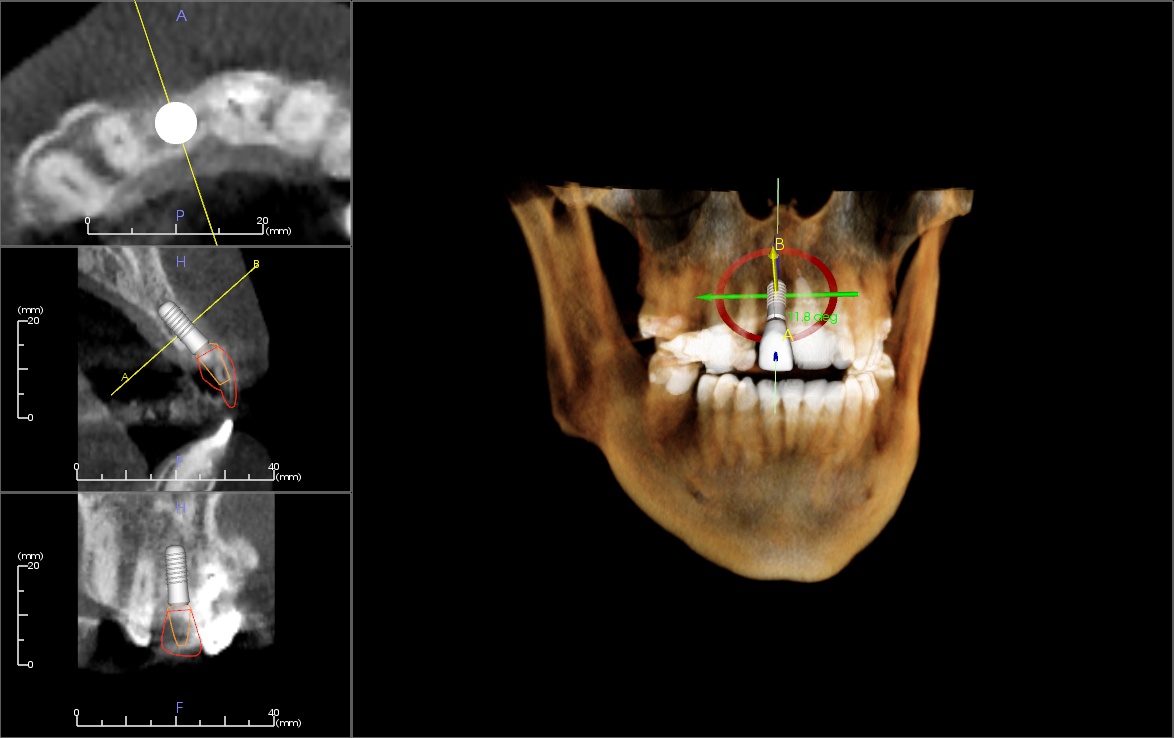

To simulate the soft tissue on the skulls, white utility wax was placed prior to all image acquisitions. The sample consisted of dentate and partially dentate skulls with no identifiable markers such as age, sex or ethnicity. The study was given an exempt status from the University of Connecticut Health Center's institutional review board, as it was not deemed human subject research. In this study, the efficacy of a 180° rotational protocol was compared with that of a conventional 360° rotational protocol in determining the location of the IANC.ĥ0 dry human skulls were obtained from the Department of Anatomic Sciences at the University of Connecticut Health Center. By contrast, CBCT enables practitioners to accurately localize and mark the nerve canal. Conventional two-dimensional imaging has a potential limitation in that it cannot provide cross-sectional or buccolingual location of the IANC. 13 To effectively treat patients without causing such injury, a radiographic examination is helpful to determine the location of the IANC. 12 Consequences of perforating the IANC include pain or loss of tactile sensation of the lower lip and chin, and partial to complete loss of sensory function. Thus, clinicians must take into consideration the unique morphological location of the IANC in each patient's treatment plan. 10, 11 The position and course of the mandibular canal varies among individuals. The ability to localize and trace the IANC is important during implant treatment planning, implant placement and any surgical procedures that involve the mandible. These advantages can be optimized with modified acquisition parameters such as the field of view, kVp and mA which can further contribute to reduction of patient dose. 7 The major advantages of the 180° scan are significant reduction in the radiation dose to the patient, basis projections, the time to acquire and reconstruct the scan due to fewer basis projections and smaller file sizes which facilitate image transfer and archiving. 6 The advent of CBCT has significantly reduced the radiation dose, but it would be desirable to develop acquisition protocols that deliver lower doses than currently existing methods and yet not compromise diagnostic efficacy. During this rotation, the scanner acquires multiple basis images of the area of interest and then reconstructs multiplanar images based on image reconstruction algorithms.

Most CBCT acquisition protocols have a 360° rotation around the subject. It also eliminates the drawbacks of superimposition and distortion that accompany other two-dimensional radiographic methods, such as panoramic radiography. 1– 3 CBCT offers a low radiation dose and high-spatial-resolution multiplanar images. Although the use of 3D imaging in the past was limited due to the radiation dose delivered by multislice medical CTs, the coming of low-dose alternatives such as CBCT has significantly shifted this paradigm.

1 Pre-operative evaluation of the location and proximity to the inferior alveolar nerve canal (IANC) is essential for placing dental implants and for surgical extraction of impacted third molars to avoid nerve paraesthesia and other potential complications. Over the past few years, several dental applications have leveraged the use of 3D imaging. CBCT is increasingly being used in dentistry to obtain three-dimensional (3D) images of the maxillofacial region for a variety of clinical applications.


 0 kommentar(er)
0 kommentar(er)
